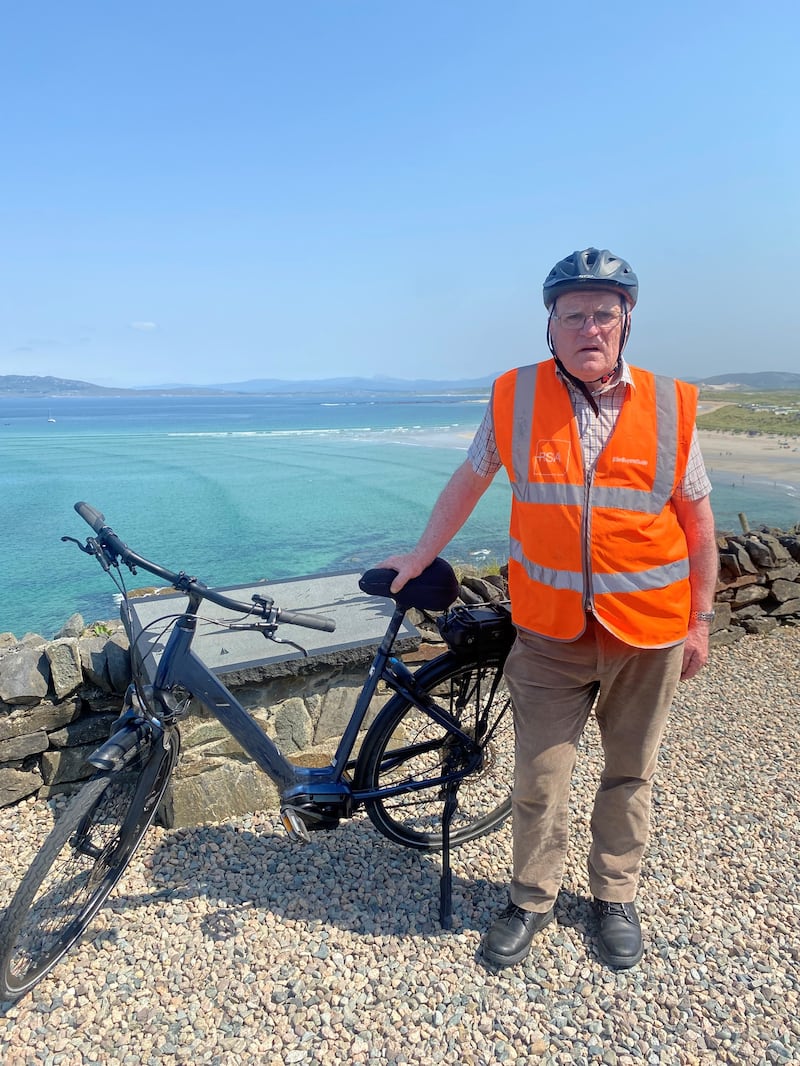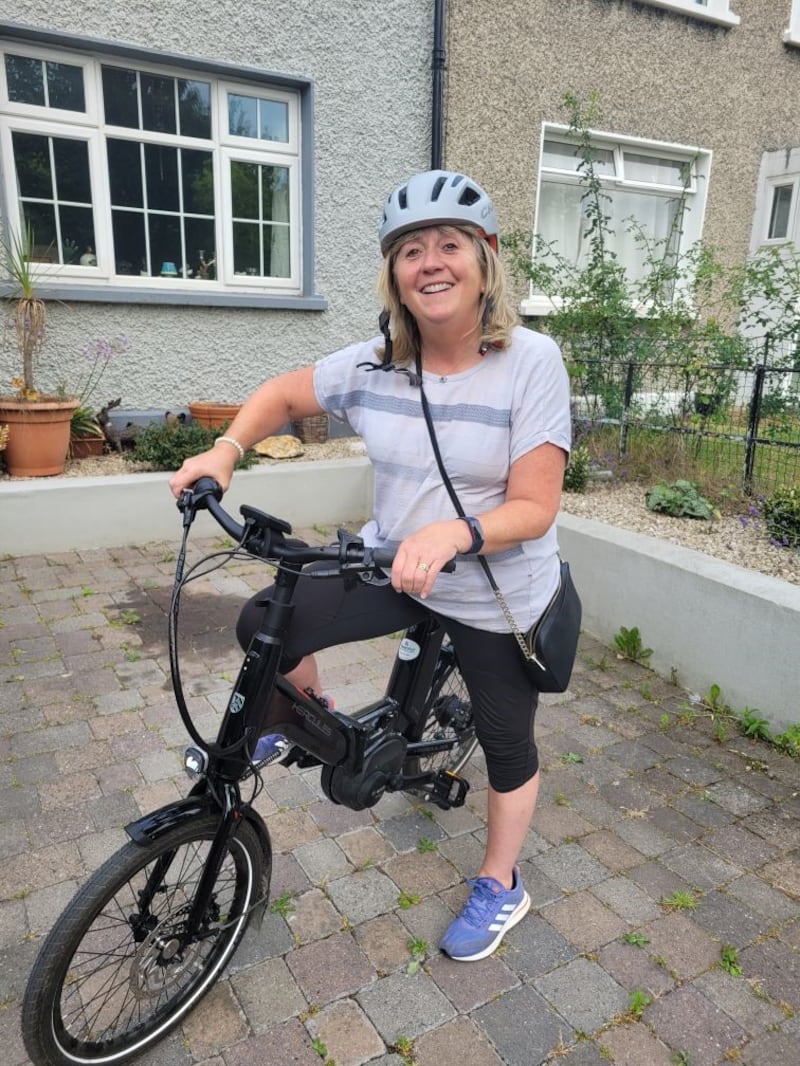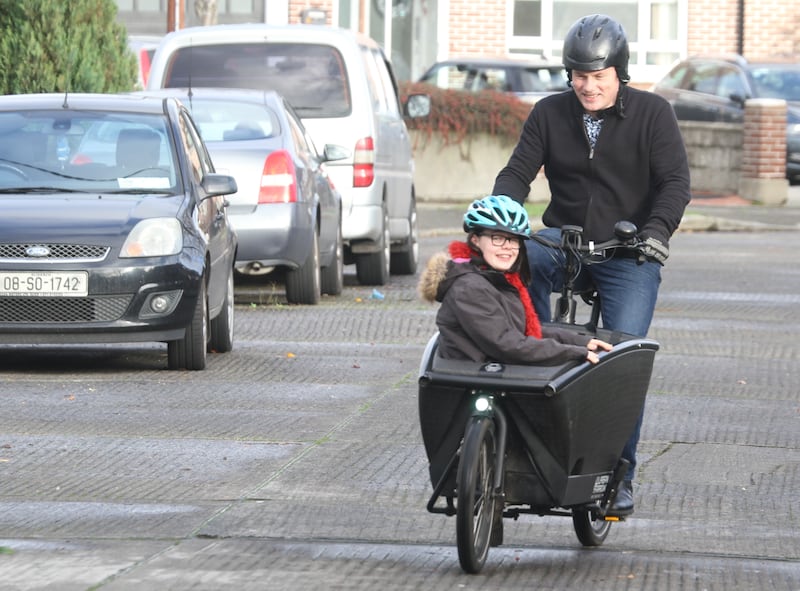In January 2020, business consultancy firm Deloitte boldly predicted this decade would be the decade of the electric bike.
Despite having been first patented in 1895, e-bikes only accounted for a small percentage of total sales of bicycles in the first two decades of the 21st century.
They were clunky, unreliable and expensive. But Deloitte predicted that advances in lithium-ion technology and better design would drives sales of e-bikes to 300 million by 2023.
Those predictions were made before the Covid-19 pandemic and the war in Ukraine which has turbocharged what was already a developing trend. These twin horrors have decimated so many industries, but not cycling.
READ MORE
During the pandemic cycling boomed worldwide. Cycling meant freedom in a world where freedoms were curtailed and public transport was out of the question. Now the war in Ukraine has sent energy prices to levels where commuters are being forced into hard choices about their modes of transport.
E-bikes have resoundingly arrived globally as a source of mass transportation.
In Germany, Europe’s biggest market, two million e-bikes were sold last year accounting for 43 per cent of all bicycle purchases. The Confederation of the European Bicycle Industry estimates that sales in Europe topped five million for the first time last year and it predicts double digit growth every year until 2030. At current rates of growth e-bikes will outsell all cars in Europe by the year 2030.
In the United States 880,000 e-bikes were sold in 2021, more than the combined number of 608,000 electric cars and trucks sold in the same year and almost double the 450,000 sold in 2020.
E-bikes offer pedal-assisted cycling, making it easier to travel long distances, traverse hills or cycle into the wind. You won’t arrive into the office sweating or needing a change of clothes. You don’t need a licence to own one nor tax and insurance. There are no parking fees, tolls or speeding fines.
Though they can be considerably more expensive than conventional bicycles, they are paradoxically less of a target for thieves. In most models, removing the battery or the digital display will disable the bike or make it worthless for resale. Higher end models can have a GPS tracker inserted as an extra.
In rush hour conditions they are invariably the fastest way of getting around in an urban environment. As they are electric, they are also low maintenance. They are much heavier than a normal bicycle but also sturdier as a result.
They have societal benefits too. E-bike emissions are negligible, they don’t clog up the road, nor do they cause traffic jams.
For these and many other reasons, owners are frequently evangelical about their virtues. There is a joke in circulation; “how do you know somebody is an e-bike owner? Because they tell you they are one”.
There are two myths surrounding e-bikes, says David King of GreenAer, the electric bike specialists. The first is that they are effectively electric motorbikes where no pedalling is required; the second is the notion that they amount to cheating.
Yes, he states e-bikes make cycling easier, but cyclists tend to cycle longer distances on them.
“You will spend up to 20 per cent more time in the saddle. We have people who want help on the hills or have had a hip operation and just want to keep active. It is a great social change. E-bikes are a fantastic enabler.”
So what’s the catch?
Well, the biggest obstacle to e-bikes for the ordinary customer is the cost. A typical e-bike will retail between €1,500 and €3,000.
The Government has increased the threshold for the cycle-to-work scheme for e-bikes to €1,500. The purchaser will still have to pay the full price for the bicycle, but the €1,500 is after tax and not before tax income.
There are no figures as to how many e-bikes are in circulation in Ireland as the cycle-to-work scheme does not keep statistics, but every retailer who spoke to The Irish Times said they are or will overtake conventional bicycles in the value of sales.
Decathlon in Ballymun, Dublin, which claims to sell more bicycles than any other store in the country, says it has sold €3 million worth of e-bikes this year. E-bikes account for 40 per cent of sales by volume and 60 per cent of bicycle sales by value.
The cheapest e-bike model in stock is Decathlon’s Elops 120 E which retails at €899. It has the motor on the carrier, three levels of assistance, a battery which lasts up to 50 kilometres, but no display as to how long the battery has left, so range anxiety is likely to be an issue.
The shop’s bestselling model is the Riverside 500 which retails at €1,250 and which it struggles to keep in stock.
At the other end of the scale GreenAer sells the Riese & Müller Charger3, which starts at €5,000. Under EU regulations 95 per cent of e-bikes are limited to giving assistance up to a speed of 25 km/h. You can cycle faster than that, but you will not receive assistance.
There are some exceptions and the Charger3 model has pedal assistance up to 45 km/h. It has specially modified brakes, wing mirrors and a horn. Its motor generates 85 newton-metres of torque, the equivalent of 3½ times pedal assistance.
GreenAer’s cargo bikes typically retail at around €6,000, but they are struggling to keep them in stock because of “second-car syndrome”, says sales executive Adam Lynch. Many families are questioning the need for a second car with fuel prices as high as they are, while commuting patterns have changed.
“The cargo bikes are flying out the door. You drop the kid off to school two kilometres and you cycle to work six or seven kilometres after that. Then you can pick up the shopping on the way back home and you don’t need that second car,” he says.
Escalating rents are also having an impact on e-bike sales. Renters are moving out of city centres in search of value and so have longer commutes. The Cycle Superstore in Tallaght sells a lot of fold-up e-bikes and commuter e-bikes. They are very popular with staff who work in tech firms in Dublin’s Docklands which is a 20 minute e-bike ride from the Tallaght area.
The same pattern has been observed in other parts of Ireland. Cathal Dennehy of Dennehy’s Cycle in Galway said the typical e-bike buyer is no longer a retired person buying for leisure cycling.
“They are still buying, but lots of younger people are buying to commute to work especially if they are only back in the office two to three days a week,” he said.
Galway city’s notorious traffic congestion is also driving sales, “but the lack of cycling infrastructure, however, is hindering further growth”, he adds.
Marty Mannering, who has written the first City & Guilds engineering course for e-bikes, said there has been double-digit growth in each of the last three years in Ireland, yet Ireland remains a country where cycling participation is relatively low. Therefore, there is a huge potential untapped market out there.
“I have been involved for 27 years in Ireland in the e-bike game and it has just become a mature industry in the last three years,” he said.
“It is increasing at about 12 per cent year on year over the last few years. For the first time becoming a bicycle engineer is a career path not just a part-time job.”

Conal Shovlin:
My Giant e-bike has five levels of assist. There are a lot of hills in Donegal. I had another bike here, but I found it too strenuous no matter how many gears it has. This is a total revolution for people of my age. I’m not that young (72), but you don’t have to get off it. You can stay on it until you get home. It is doing two things at the same time. You are getting exercise and it’s helping the climate. People of my generation partied on fossil fuel for 60 years. I had a back operation this year and it was great to be able to head off on the bike for exercise afterwards. I’d really recommend it to people of all ages as it is a social activity in that I meet many more neighbours than if I was taking the car.
Mike McKillen:
“I am an everyday bike user. I am about to hit 79 and my bike that I bought on the cycle-to-work scheme was 12 to 13 years old. I decided to upgrade because of my age and chose electric. I have a German trail e-bike – it is a Hibike. It is very heavy, 28 kilos and it is a beast of a thing. I get great fun from it. It takes me places where I wouldn’t have gone on an ordinary bicycle. I have done 420 kilometres in three months and that’s just from shopping and socialising. That’s 420 kilometres not made by car. It has extended my range. You actually cover more ground. I’m now able to go anywhere. Hills don’t phase me.

Jill Lacey:
My husband [Dermot, Labour Party councillor] and I have e-bikes. It stems from the time Dermot was lord mayor in 2002 and he had an e-bike. I got mine a couple of years later. Sometimes we go for a cycle around UCD or to the tennis club. We have a camper van. We load up the bikes on the camper van and that is when we get the best use out of them. I recommend them 100 per cent. If you want to get somewhere without being hot and sweaty, they are great. It makes it more pleasurable to cycle. I have a fold-up e-bike. It’s a good sturdy bike. On holidays I use it every day. During Covid-19, the bikes were brilliant. We only had a certain km we could go. It kept us sane.

Simon Brady:
My wife Karen and I have cargo bikes. We have an Urban Arrow and a RadWagon. The Urban Arrow is a front carrier. We bought it in January 2019. We moved into a new house in the Kimmage area of Dublin. Our children Juliette (11) and Cillian (9) were in school in Haddington Road. In the car you couldn’t predict how long it would take you to get them to school. One day you might be a half an hour early; the other you might not get there on time. The traffic was terrible. We needed a solution that did not involve a car. We tried out the Urban Arrow. The two children can fit into it. Our commute to school is now 15 minutes. We bought a second one so that Karen could bring the children to school and I can pick them up. We can justify the cost because we don’t need a second car and we won’t be buying a second car again.
Leona Tuck:
I bought an e-bike recently, so far so good. It’s a Victoria Pendleton e-bike from Halfords costing €1,200 through the cycle-to-work scheme. It’s an old Dutch-style bike. I bought it for two reasons. My commute in the south of Wexford from Tintern Abbey to the John F. Kennedy Arboretum is 15 kilometres. I have to deal with blind bends and steep gradients. With an electric assist, I can get through the dodgy parts of the road very quickly. I am an outdoor tour guide in the JFK Arbortieum. We are always out and about doing tours and going on walks. I need to conserve energy for my job. I can’t really afford to burn myself out cycling a manual bike 15 kilometres to work.

















